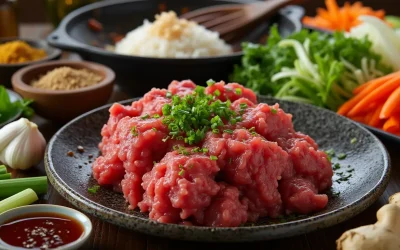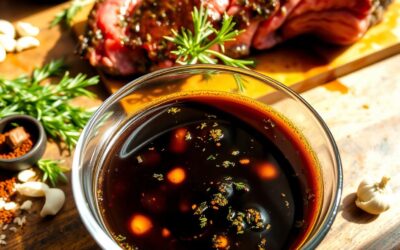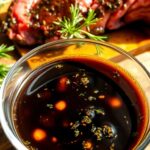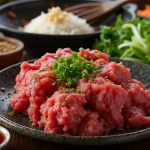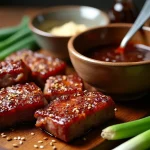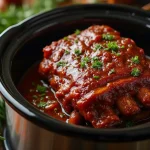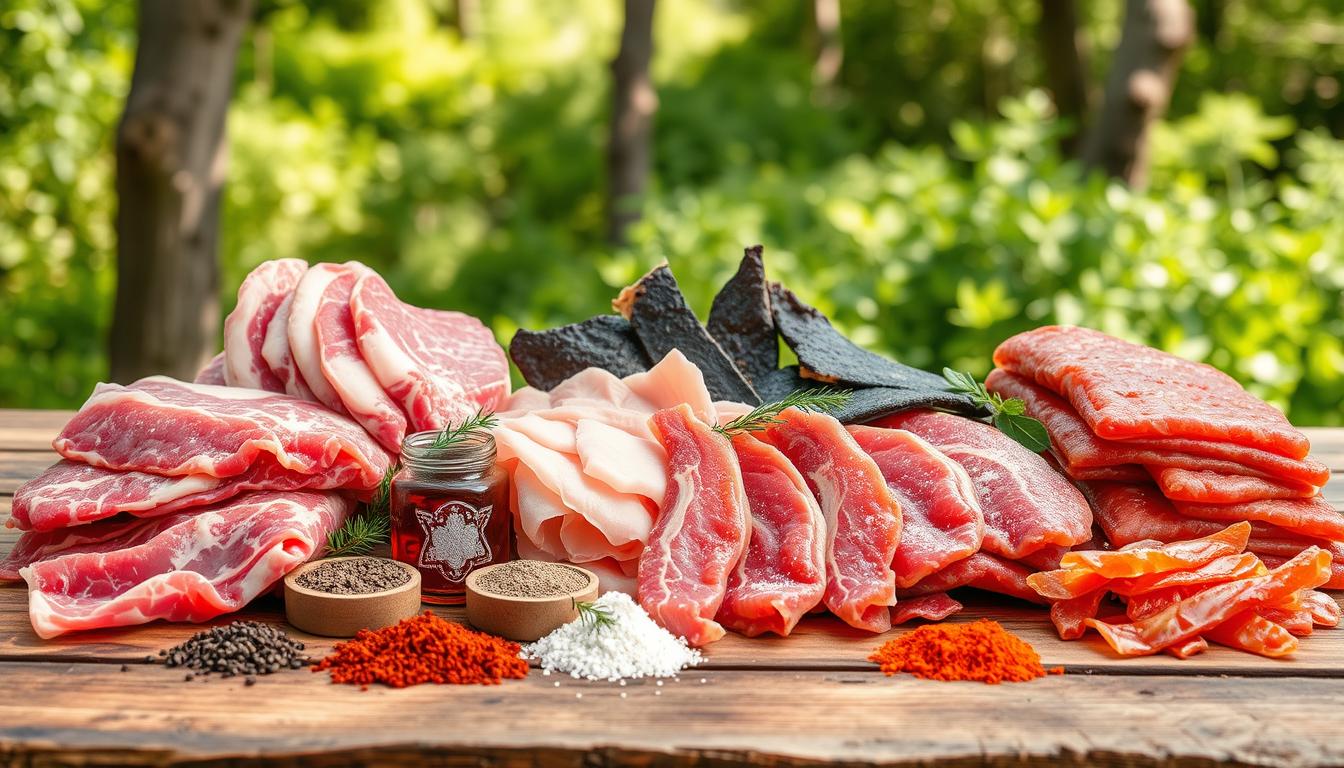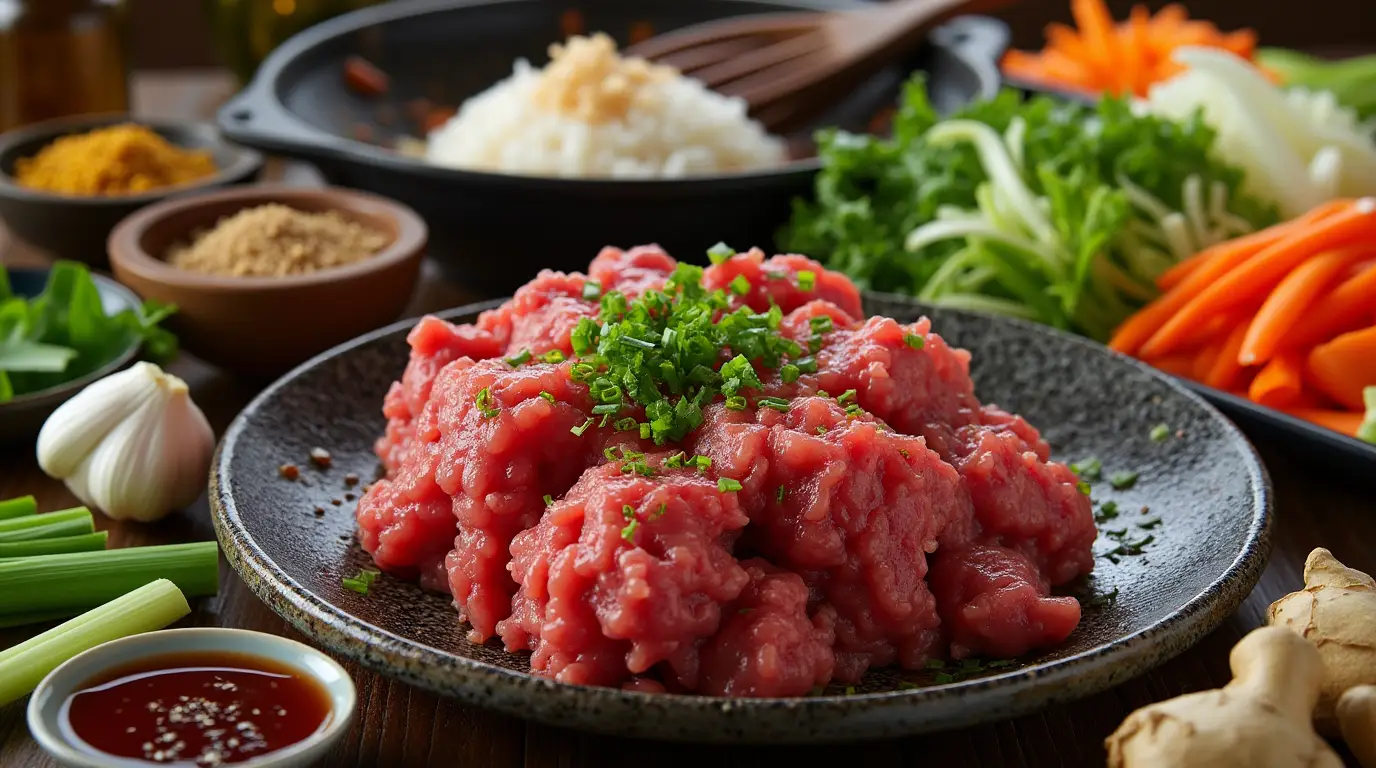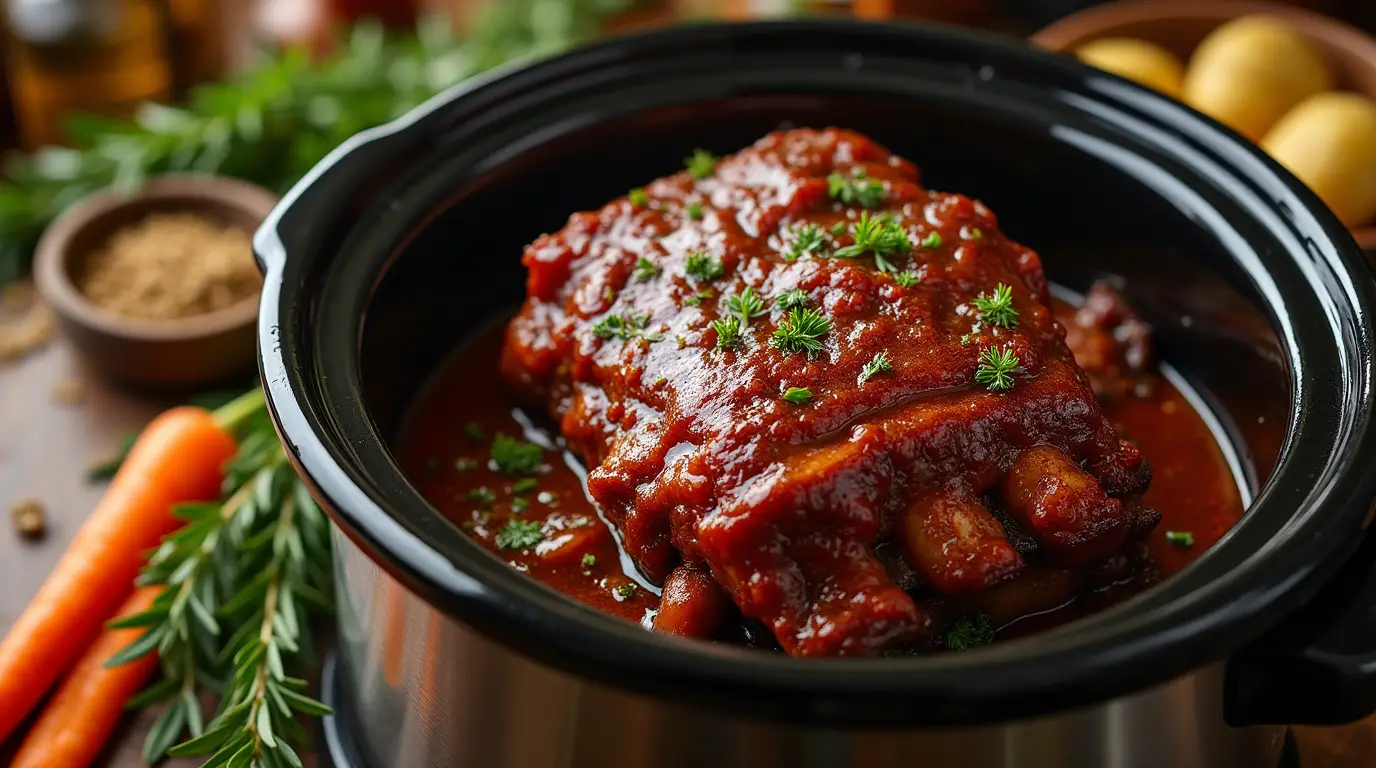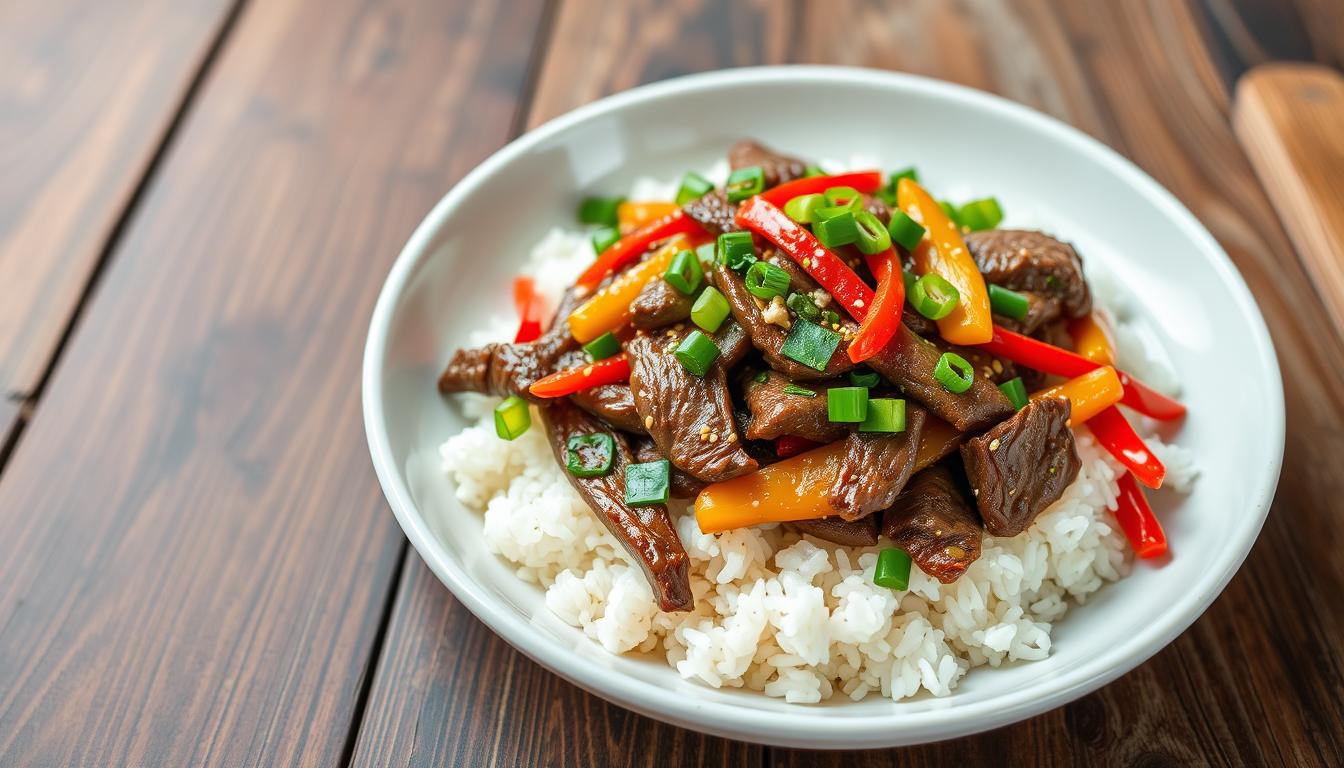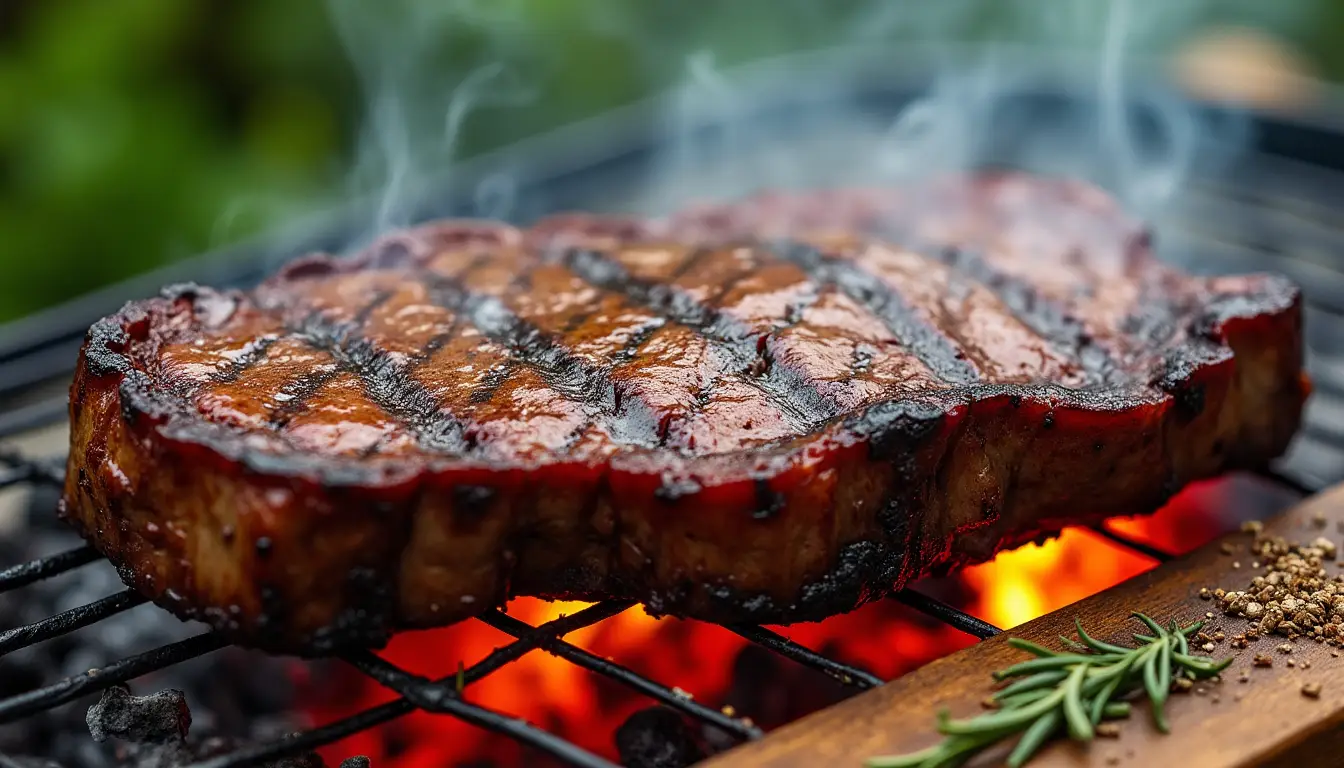The smell of homemade beef jerky in the kitchen brings back memories of road trips and camping. Each slice is a story of flavor, tradition, and skill. It turns simple meat into a snack that millions across America love.
In 2023, Americans spent over $1.5 billion on beef jerky. This shows how much people love this tasty treat. Making the best beef jerky starts with picking the right meat. This choice is key to a great homemade jerky experience.
If you love jerky or just want to try making it, knowing about meat selection is important. Different cuts give unique textures, flavors, and protein levels. This can really improve your snacking experience.
Table of Contents
Understanding the Basics of Jerky Making
Making tasty jerky begins with picking the right meat. Success comes from knowing how to turn fresh meat into a tasty snack. Learning about meat choice can make you go from beginner to expert.
What Makes Good Jerky Meat
Choosing the right lean meat is key for top-notch jerky. The best choices are:
- Top round cuts
- Buffalo meat
- Venison
- Eye of round
The Role of Fat Content
Fat content is very important in making jerky. Lean meat with minimal fat is best. Too much fat can:
- Shorten shelf life
- Stop proper drying
- Lead to spoilage
“The key to great jerky is selecting meat with less than 10% fat content.” – Jerky Experts
The Importance of Fresh Meat Selection
When getting meat for jerky, follow these key tips:
| Meat Characteristic | Recommended Criteria |
|---|---|
| Meat Color | Bright red, no dark spots |
| Odor | Clean, no unusual smells |
| Fat Marbling | Minimal, lean cuts preferred |
| Thickness for Slicing | 1/4 inch recommended |
By choosing lean meat, controlling fat, and picking fresh ingredients, you’ll make delicious homemade jerky. It will be as good as store-bought.
Best Meat for Jerky: Top Choices Explained
Choosing the right meat is key to making great beef jerky. Start by picking the best cuts for flavor and texture.
Experts say lean beef is the best for jerky. The right cuts make your jerky taste amazing.
“Great jerky begins with selecting the right meat cut” – Jerky Crafting Expert
- Eye of Round: Premium choice for lean, tender jerky
- Bottom Round: Rich flavor profile
- Top Round: Commercial producer’s favorite
- Sirloin Tip: Exceptional beef flavor
- Flank Steak: Intense meat taste
Each cut has its own special qualities. Knowing these helps you pick the best meat for your jerky.
| Beef Cut | Leanness | Flavor Intensity | Price Range |
|---|---|---|---|
| Eye of Round | Very Lean | Mild | Moderate |
| Bottom Round | Lean | Strong | Budget-Friendly |
| Sirloin Tip | Lean | Rich | Premium |
| Flank Steak | Moderate | Intense | Mid-Range |
Your choice depends on what you like, your budget, and what you want your jerky to be like. Pro tip: Always trim excess fat to ensure the best jerky texture and flavor.
Eye of Round: The Premium Choice
Eye of round is a top pick for making tasty jerky. It’s a high-quality choice that’s also affordable. This makes it perfect for those who love making jerky at home.
Why Eye of Round Excels in Jerky Making
This cut has many benefits for making jerky:
- It’s very lean with little fat inside
- It has a consistent texture for even slices
- It’s big, making it great for making lots of jerky
- It soaks up flavors well from marinades
Optimal Slicing Techniques
Slicing techniques are key for perfect jerky. The meat’s grain makes it easy to slice against the grain. This makes the jerky tender. Slice it about 1/4 inch thick for the best texture.
“The key to great jerky is understanding your meat’s grain and slicing with precision.” – Jerky Crafting Expert
Cost-Effectiveness Factor
Eye of round is also budget-friendly. It’s packed with protein and has little fat. This makes it a smart choice for making jerky at home.
Pro tip: Choose an eye of round roast that’s about 2.69 lbs for the best results.
Top Round and Bottom Round Options
When making top round jerky, you’ll find two great beef cuts. Top round and bottom round beef are perfect for tasty round roast jerky. They have special qualities that make them stand out.
- Top Round (London Broil)
- Most popular commercial jerky cut
- Lean and cost-effective
- Moderate tenderness
- Bottom Round (Outer Muscle)
- More interior marbling
- Slightly less tender than top round
- Enhanced flavor profile
“Selecting the right cut is key for making great jerky. It’s all about flavor and texture.”
Here’s a detailed look at their nutritional differences:
| Meat Cut | Protein (g) | Fat (g) | Calories |
|---|---|---|---|
| Top Round | 30.1 | 3.77 | 162 |
| Bottom Round | 27.2 | 7.83 | 185 |
Both top round and bottom round beef are great for homemade jerky. Just remember to trim fat and slice evenly for the best taste.
Sirloin Tip and Flank Steak Alternatives
Exploring unique jerky options, sirloin tip and flank steak offer exciting alternatives. These meats add distinctive flavors and textures to your homemade jerky.
Comparing Tenderness Levels
Choosing the right meat is key for tender jerky. Sirloin tip is leaner, with less marbling, for a tender texture. Flank steak has more fat inside, giving it a richer flavor.
- Sirloin tip: Extremely lean with consistent texture
- Flank steak: More marbling, more intense beef flavor
- Recommended slicing technique: Cut against the grain for maximum tenderness
Price Point Considerations
For those watching their budget, sirloin tip and flank steak are pricier. Yet, they offer better taste and texture, making them worth the extra cost for many.
Flavor Profiles
Each cut has its own flavor. Sirloin tip jerky has a clean beef taste. Flank steak jerky is more intense. Marinades can boost their natural flavors.
“The secret to great jerky is selecting the right cut and understanding its unique flavor.” – Jerky Crafting Expert
Proper preparation is essential. Use a meat tenderizer with bromelain to keep your jerky tender and tasty.
Alternative Meat Choices for Jerky Making
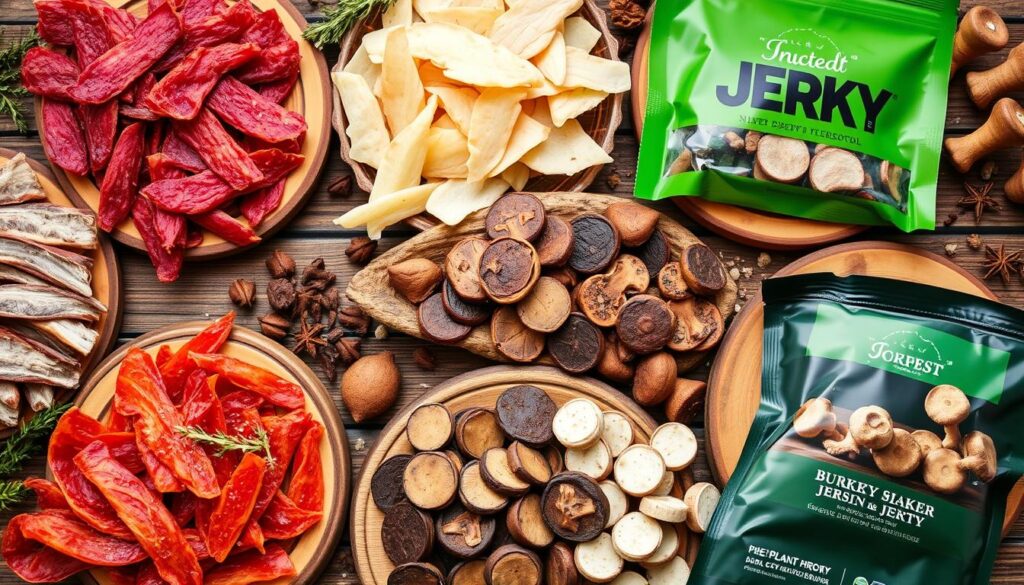
Beef isn’t the only choice for making jerky. Trying out different meats can change your jerky game. Ground beef, venison, and turkey jerky bring new tastes and health benefits.
Let’s explore some great meat options for making tasty jerky:
- Ground Beef Jerky: It’s softer and easier to chew. Great for those who like a uniform texture.
- Venison Jerky: It’s lean and has a wild taste. Hunters and game meat fans love its earthy flavor.
- Turkey Jerky: It’s perfect for health lovers. It has 70 calories and 12 grams of protein per serving.
- Chicken Jerky: It’s another lean option. It has 8 grams of protein and 70 calories per serving.
Choosing the right jerky meat is important. Each meat adds something special to your snack:
“Exploring different meat options allows you to customize your jerky experience and meet specific dietary goals.”
For ground beef jerky, use 90% lean meat or higher. This ensures a good texture and less fat. Venison and turkey jerky are great for leaner proteins with unique tastes.
Your meat choice greatly affects your jerky. Think about what you like to eat, your health goals, and the texture you prefer.
Preparing Your Meat for Jerky Production
Preparing jerky needs careful steps and precise methods. Knowing how to pick meat, trim it, and process it is key. This way, you’ll make tasty and safe jerky every time.
Proper Trimming Techniques
Trimming is vital when getting meat ready for jerky. Take out all fat to avoid spoilage and keep the jerky fresh longer. Opt for lean cuts with little fat for the best results.
- Choose cuts with less than 10% fat content
- Use a sharp knife for clean, precise trimming
- Remove any connective tissue or gristle
Ideal Thickness for Slicing
For perfect jerky, slicing is key. Go for slices about 1/4 inch thick. This thickness helps the jerky dry evenly and keeps it chewy.
| Slice Thickness | Drying Time | Texture Result |
|---|---|---|
| 1/8 inch | 2-3 hours | Crisp, thin |
| 1/4 inch | 4-5 hours | Chewy, traditional |
| 1/2 inch | 6-7 hours | Thick, dense |
Temperature Considerations
Keeping the right temperature is critical for safety. Freeze your meat a bit to slice it easier. Make sure it heats up to 160°F to kill off bacteria.
“Safety first: Always heat your meat to the recommended internal temperature before drying.” – Food Safety Experts
By sticking to these exact steps, you’ll make delicious, safe, and top-notch jerky. It will wow even the pickiest meat lovers.
Common Mistakes to Avoid When Selecting Meat
Making perfect jerky starts with choosing the right meat. Knowing what mistakes to avoid can help you make better jerky. This ensures your jerky tastes great and is of high quality.
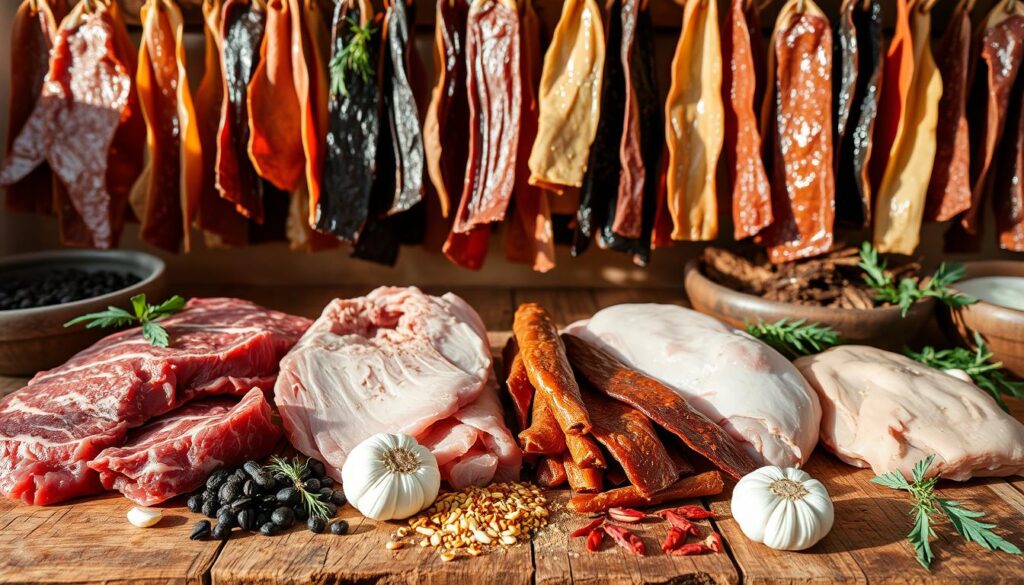
When picking meat for jerky, some mistakes can ruin your project. Learning how to fix these issues can make your homemade jerky taste like it was made by a pro.
- Avoid high-fat meat cuts that prevent proper drying
- Never use meat past its prime or with questionable freshness
- Maintain consistent slice thickness for even dehydration
- Balance marination time and seasoning levels
“The secret to exceptional jerky lies in meticulous meat preparation and understanding possible pitfalls.” – Jerky Craft Masters
Choosing the right meat is key to making great jerky. Lean cuts like top round or eye of round are best. They dry evenly and soak up marinades well.
| Mistake | Consequence | Solution |
|---|---|---|
| High-fat meat | Uneven drying, rancidity | Choose lean cuts, trim excess fat |
| Inconsistent slicing | Uneven texture | Use sharp knife, maintain uniform thickness |
| Overseasoning | Overpowering flavor | Balance marinade, taste incrementally |
Pro tip: Marinate between 12-24 hours for optimal flavor absorption, avoiding oversaturation that can lead to tough, salty meat.
By knowing these mistakes and using the right techniques, you’ll make delicious, top-notch jerky every time.
Storage and Shelf Life Based on Meat Type
Keeping homemade jerky fresh needs careful storage and knowing its shelf life. How you store your jerky greatly affects its quality and safety.
Optimal Storage Conditions
Storage environment is key for jerky. Keep it in airtight containers in cool, dry spots, away from sunlight. Vacuum-sealed bags can make your jerky last longer.
- Use oxygen-absorbing packets for extended preservation
- Maintain consistent room temperature around 70°F
- Avoid humid environments
- Keep containers sealed when not in use
Expected Shelf Life
The shelf life of jerky depends on the meat and how it’s made. Commercial jerky lasts longer because of special processing.
| Jerky Type | Room Temperature | Refrigerated | Frozen |
|---|---|---|---|
| Commercial Jerky | 1 year | 1-2 years | Indefinite |
| Homemade Jerky | 1-2 weeks | 3-6 months | Up to 1 year |
Signs of Spoilage
Homemade jerky needs constant watch. Always check your jerky before eating, looking for signs of spoilage:
- Unusual odors
- Visible mold growth
- Texture changes
- Excessive moisture
Pro tip: When in doubt, throw it out. Food safety always comes first.
Knowing how to store jerky right can help it last longer. This way, you can enjoy your favorite snack with peace of mind.
Market Trends and Commercial Jerky Production
The jerky industry is changing fast, with big shifts in how it’s made and what people like. Recent studies show interesting changes in the commercial jerky world. These changes help us understand what’s happening now.
Recent years have seen big changes in the jerky market. The industry has faced tough times, with sales growing at a 1.7% CAGR. By 2024, it’s expected to reach $982.9 million in size.
- Top commercial jerky brands dominate the market
- Beef jerky remains the primary revenue generator
- Innovative flavor profiles are driving consumer interest
Leading commercial jerky brands have strong positions in the market:
| Company | Market Share | Key Characteristics |
|---|---|---|
| Link Snacks, Inc. | 22.3% | Consumer loyalty during pandemic |
| Oberto Sausage Company | 17.5% | Diverse product range |
| Conagra Brands, Inc. | 6.9% | Broad market presence |
The jerky industry faces challenges like higher meat costs and changing tastes. Price adjustments and new product ideas are key for brands to stay ahead.
“Innovation and adaptability are key to success in the dynamic jerky market” – Industry Expert
New trends in jerky include more flavors, healthier options, and new protein sources. People want more than just beef jerky. This pushes producers to create unique and healthy products.
Conclusion
Making great homemade jerky starts with picking the right meat. You’ve learned that eye of round is the top choice for many. By following the guide, you can turn any meat into tasty, protein-rich snacks.
Choosing lean, high-quality meats is key. Focus on slicing right, keeping thickness even, and marinating well. Whether it’s beef, turkey, or elk, the basics are the same.
Try different meats and flavors to find your favorite. Trimming, slicing right, and drying at the right temperature are all important. Your love for making jerky can turn it into a true art.
Keep learning and making snacks that show off your skills. With time and effort, you’ll make jerky that rivals restaurants. Enjoy the journey and the delicious results.


